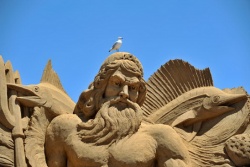Difference between revisions of "Dhutanga"
(Created page with "Dhutanga (Known in Thai as "Thudong") is a group of thirteen austerities, or ascetic practices, most commonly observed by Forest Monastics of the Theravada Tradition of Buddhi...") |
|||
| Line 1: | Line 1: | ||
| + | [[File:Eagull-6.jpg|thumb|250px|]] | ||
Dhutanga (Known in Thai as "Thudong") is a group of thirteen austerities, or ascetic practices, most commonly observed by Forest Monastics of the Theravada Tradition of Buddhism. | Dhutanga (Known in Thai as "Thudong") is a group of thirteen austerities, or ascetic practices, most commonly observed by Forest Monastics of the Theravada Tradition of Buddhism. | ||
| Line 23: | Line 24: | ||
9. rukkhamūla (Dwelling under a tree) — this is the austerity of not dwelling under a roof. | 9. rukkhamūla (Dwelling under a tree) — this is the austerity of not dwelling under a roof. | ||
| − | + | [[File:Magichat.jpg|thumb|250px|]] | |
10. abbhokāsika (Dwelling in a dewy place) — this is the austerity of dwelling neither under a roof or a tree, but in the open | 10. abbhokāsika (Dwelling in a dewy place) — this is the austerity of dwelling neither under a roof or a tree, but in the open | ||
Revision as of 10:44, 14 January 2013
Dhutanga (Known in Thai as "Thudong") is a group of thirteen austerities, or ascetic practices, most commonly observed by Forest Monastics of the Theravada Tradition of Buddhism.
Description
All Forest Monks will observe at least one of the dhutanga austerities. The dhutanga austerities are meant to deepen the practice of meditation and assist in living the Holy Life. Their aim is to help the practitioner to develop detachment with material things including the body.
The thirteen dhutanga practices
1. paṃsukūla (Abandoned Robes) — this is the austerity of using any cloth found on the road as material for making robes.
2. tecīvarika (Three Robes) — this is the austerity of only using the three robes of a bhikkhu as garments.
3. piṇḍapāta (Begged Food) — this is the austerity of eating only what one gains on almsround (pindacara), whether it be a little or a lot or even nothing at all. NB: bhikkhus do not beg per se, since they are not allowed under Monastic rules (Vinaya) to ask/beg for food. The bhikkhu observing this dhutanga declines invitations to take meals at the houses of Lay people.
4. sapadānacārika (Regular Alms round) — this is the austerity where if a bhikkhu gains tasty food from a particular house on his almsround, then he avoids that house in future
5. ekāsanika (One eating) — this is the austerity where the bhikkhu will eat only in one place and not eat a little in one spot and then eat more in another.
6. pattapiṇḍika (Measured food) — this is the austerity of eating only a certain measure of food. The bhikkhu sees fault in indulging his appetite.
7. khalupacchābhattika (No food after time) — this is the austerity of no longer accepting any extra food after having started to take the meal
8. āraññika (Dwelling in a peaceful place) — this is the austerity where the bhikkhu does not dwell in a village or noisy temple. This is meant to help with meditation, as it is very hard to meditate in a noisy place.
9. rukkhamūla (Dwelling under a tree) — this is the austerity of not dwelling under a roof.
10. abbhokāsika (Dwelling in a dewy place) — this is the austerity of dwelling neither under a roof or a tree, but in the open
11. susānika (Dwelling among the graves) — this is the austerity of living/dwelling in a cemetery. NB cemeteries in Ancient & modern India often have corpses left out in the open or only partially cremated. Also places where ghosts & malevolent spirits were known to inhabit...a frightening place.
12. yathāsantatika (Any chanced upon place) — this is the austerity of at the end of a days walking/wandering to sleep wherever the bhikkhu happened to be so long as it was safe.
13. nesajjika (Always sitting and not lying down) — this is the austerity of not sleeping stretched out. Usually the bhikkhu sleeps propped against a wall or even in the meditation posture.
Notable Modern Practitioners
Ajahn Mun Bhuridatta and Ajahn Chah

